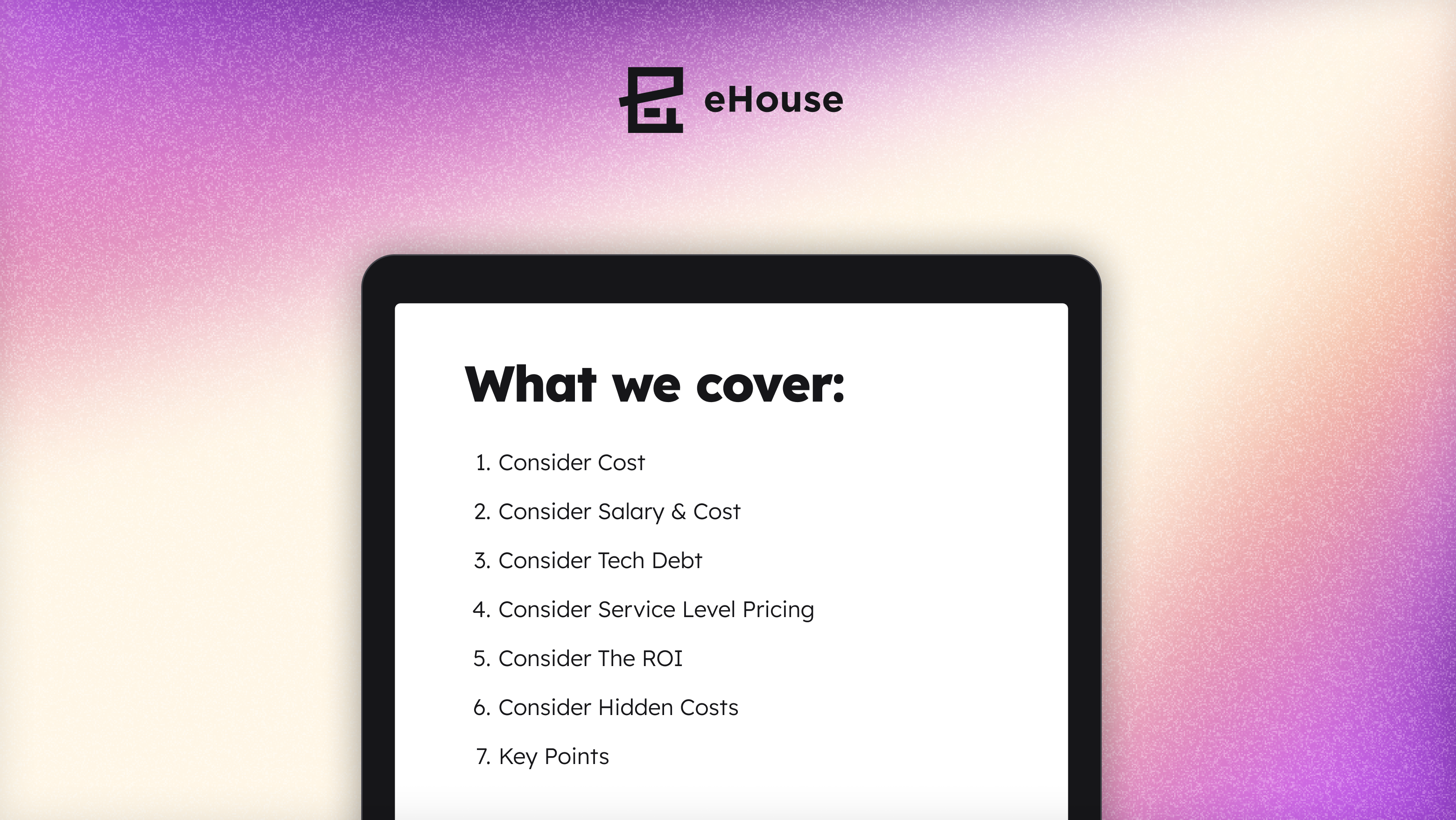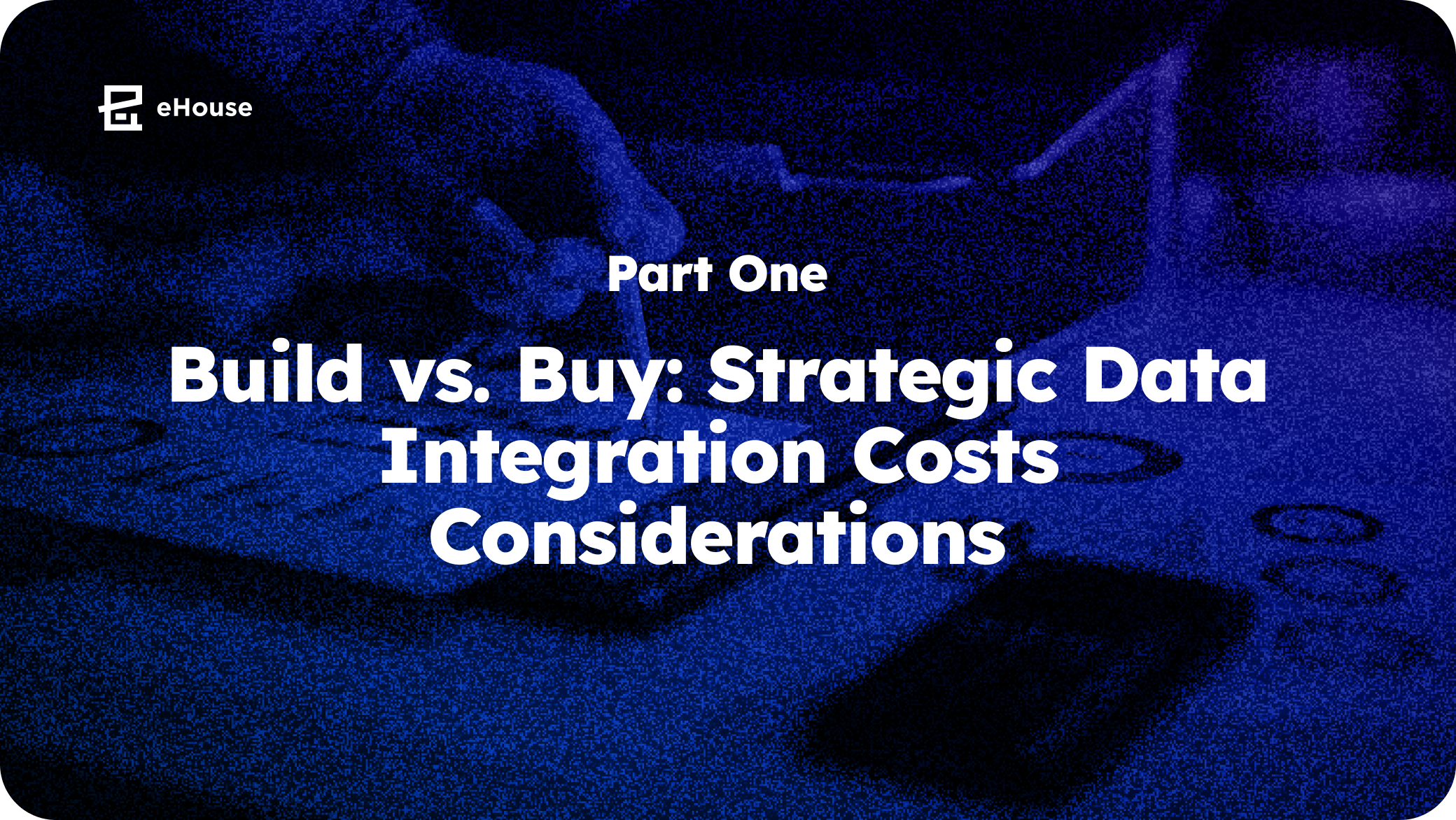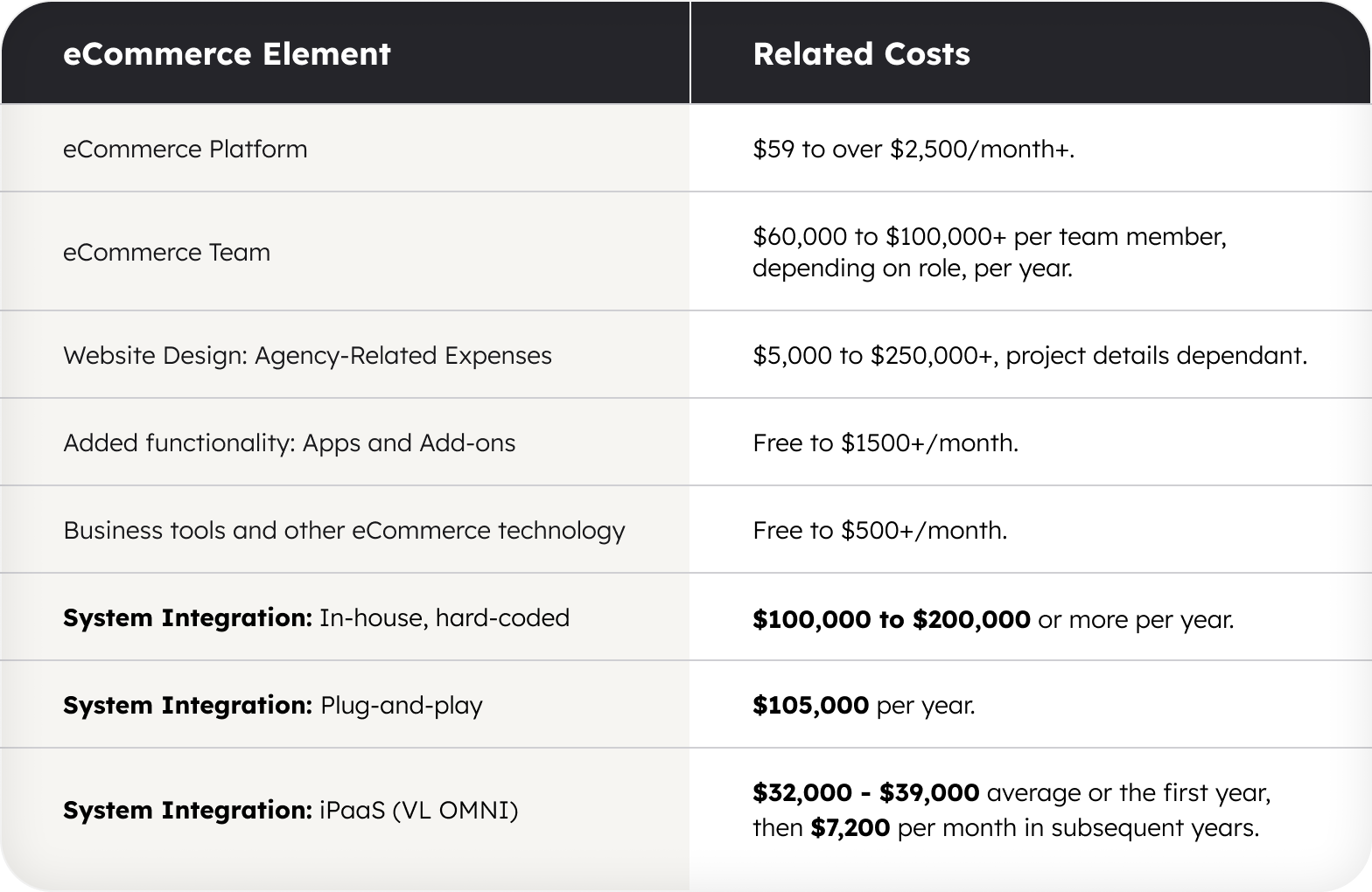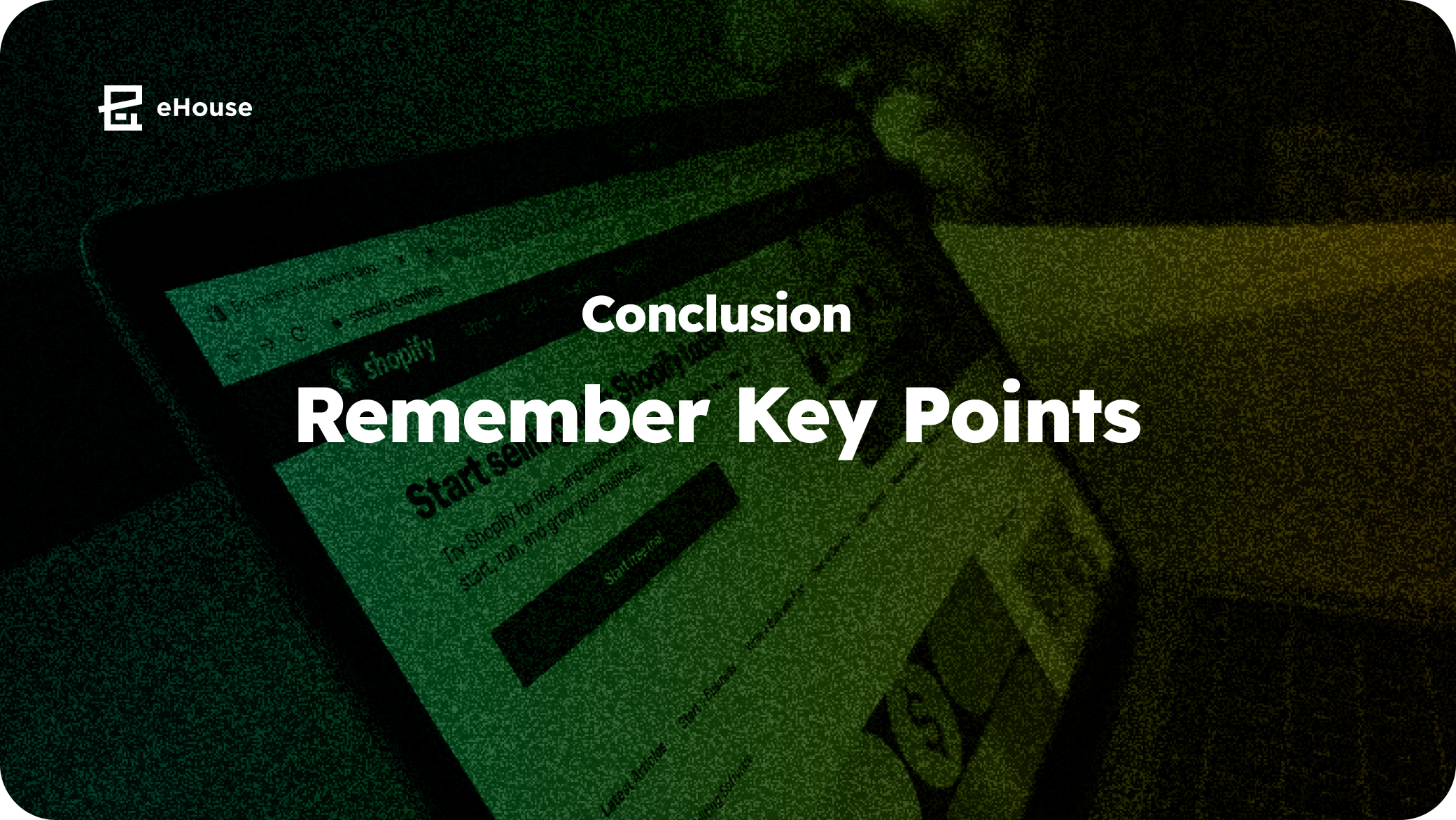eBooks
•
7 MIN READ


This guide allows you to take into account cost considerations for strategic data integration for your business. There are generally three options, build your integrations with your in-house team, download entry-level plug-and-play integrations or outsource to an iPaaS data integration solution provider.

How much are you spending on ineffective integration solutions? In-house DIY can cost $100,000-$200,000+/year; plug-and-play will run you $105,000+/year.
VL by eHouse?: A fraction of the price with the power of 30+ years of integration expertise on your side.

In the world of Shopify eCommerce data integration, it's important to understand the differences between two options: building your own integration in-house, or going with a pro like VL by VL by VL by eHouse for Integration Platform as a Service (iPaaS).
This document aims to provide insights into various metrics and factors that influence the decision-making process, including:
When considering in-house integration, it is essential to account for the salary of hiring a professional to create and maintain these integrations. In-house integration requires ongoing resources, including development, documentation, maintenance, and support. The salary of an IT professional can vary based on factors such as experience, location, and specific requirements.
On average, an experienced integration specialist's annual salary can range from $80,000 to $150,000 or more, depending on the region and level of expertise required.
On the other hand, outsourcing to an iPaaS provider like VL by eHouse offers a cost-effective alternative. iPaaS providers offer subscription-based pricing models, typically charging a monthly fee based on the complexity and volume of integrations. While pricing structures may vary, iPaaS solutions often offer more cost predictability and scalability compared to maintaining an in-house team.
Tech debt refers to the accumulated cost of additional rework or maintenance required due to choosing a suboptimal technical solution. In the case of in-house integrations, there is a potential for higher-tech debt.
Building and maintaining custom integrations from scratch can result in tightly coupled systems, limited scalability, and difficulties adapting to future changes.
This can lead to higher costs and longer development cycles when adding new applications or modifying existing integrations. Plug-and-play solutions should keep up but may have a maintenance fee layer and there is always the possibility that the solution will be sunset.
In contrast, iPaaS solutions like VL by eHouse specialize in data integration and have built-in flexibility and scalability. They provide pre-built connectors and robust data mapping capabilities that reduce the risk of tech debt. An iPaaS provider continually updates and enhances their platform to keep pace with evolving technologies and APIs, ensuring compatibility and reducing the need for rework.
Service level pricing for in-house integration depends on factors such as the complexity of integrations, the number of applications involved, and ongoing maintenance and support requirements. These costs can be difficult to estimate accurately, as they vary from project to project. The hidden cost as outlined earlier is the tech debt and the risk associated with custom code. Plug-and-play solutions may have a service level pricing model or may be a flat rate. Some in rare cases are free. As always this is a get what you pay for type of solution and may or may not fit.
iPaaS providers like VL by eHouse often offer transparent pricing models. They typically have tiered pricing structures based on the number of integrations, data volume, and additional services required. On-boarding fees cover the initial setup and configuration of integrations, while monthly fees encompass ongoing support, maintenance, and access to the iPaaS platform's features and functionalities.
Determining ROI involves considering the costs and benefits of each integration approach. In-house integrations require upfront investments in hiring and training IT professionals, developing and maintaining integrations, and potential future costs associated with tech debt. ROI can vary depending on the size of the integration project and the longevity of the solution. A plug-and-play solution is usually a fixed price either monthly, annually or one time. ROI is limited to the functionality the solution provides.
An iPaaS provider like VL by eHouse can offer a faster time-to-market with pre-built connectors and a dedicated integration platform. With reduced development and maintenance costs, ROI can be realized more quickly. iPaaS solutions also provide scalability, enabling businesses to adapt to changing requirements and add new integrations without significant additional investments.
Beyond the direct costs, there are other hidden costs associated with both in-house and iPaaS integrations that should be considered. In-house integrations often require additional resources such as infrastructure, development tools, and ongoing training for IT professionals. These costs can add up over time, increasing the total cost of ownership.
With an iPaaS provider like VL by eHouse, these hidden costs are significantly reduced. The iPaaS platform handles the infrastructure, software updates, and compatibility with various applications and APIs. Additionally, iPaaS providers often offer customer support, documentation, and community resources, reducing the burden on internal teams.

For mid-tier eCommerce or multichannel commerce merchants, outsourcing to an iPaaS partner like VL by eHouse offers numerous advantages over building in-house integrations. The key takeaways include:
Overall, an iPaaS partner like VL by eHouse provides eCommerce or multichannel commerce merchants with a cost-effective, scalable, and future-proof solution for their data integration needs, allowing them to focus on their core business and accelerate growth.
**Note:** The pricing, service level, and ROI specifics mentioned in this document are provided for illustrative purposes and may vary based on individual circumstances and the chosen iPaaS provider. It is recommended to consult with specific providers for accurate and up-to-date information.
Have an idea for a project? Fill out this form and we’ll get back to you shortly.